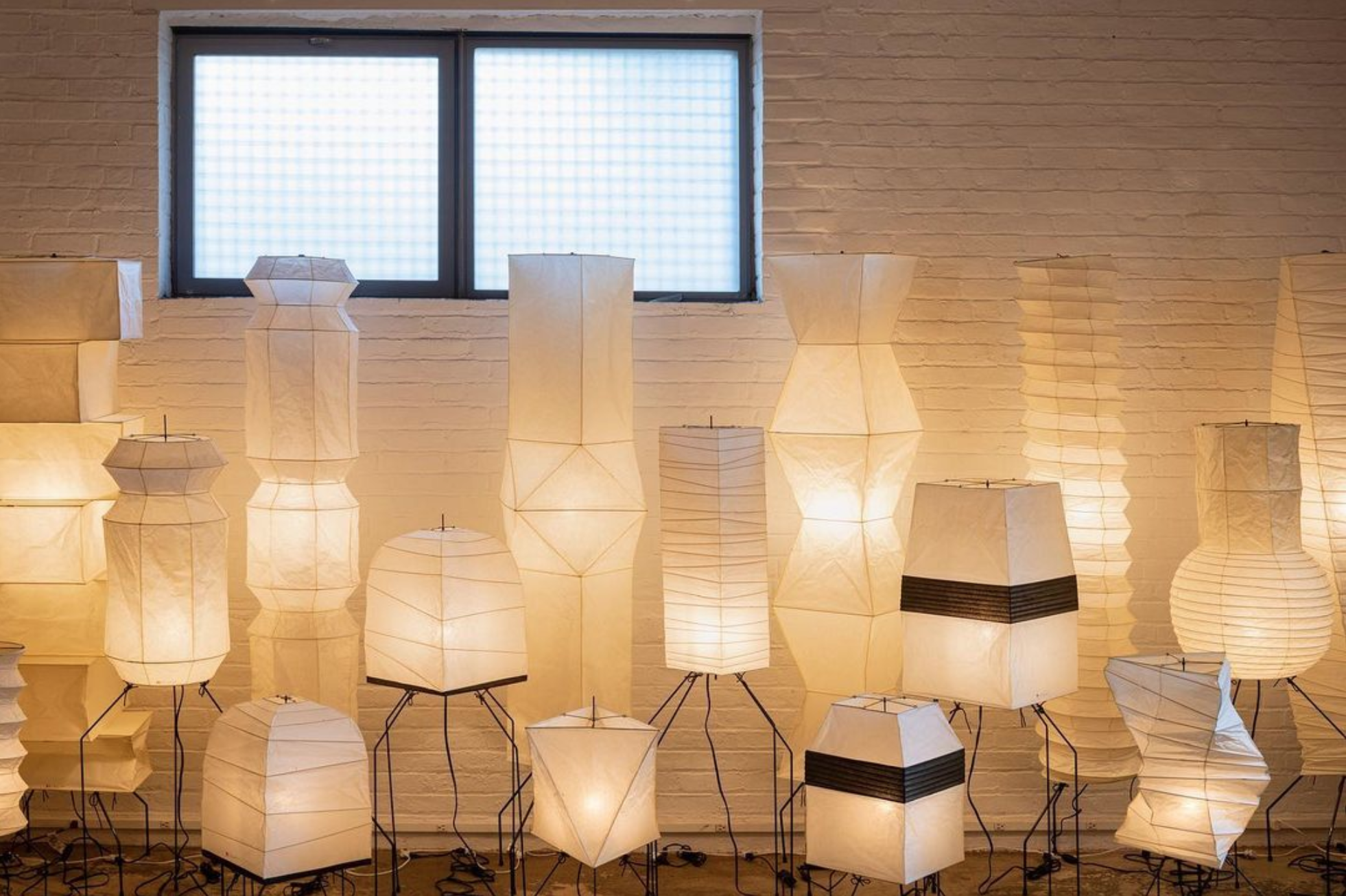For this upcycling project, I plan to use a large sheet of scrap paper, scrap wood, and components from an unused lamp to make a functioning mid-century modern lamp with origami elements in the form of a lampshade/light diffuser. I’m drawn to the mid-century movement and I believe that the aesthetic goes very nicely with the geometrical shapes and patterning of origami. Mid-century modern is characterized by its use of clean lines, organic forms, simple shapes, and intentional usage of color [1]. The use of wood or natural materials is especially prominent, the below image showcases the woodwork I hope to emulate in my upcycling project:


In the above two images note the clean lines and angles of the furniture alongside the use of prominent wood grains. Furniture of this aesthetic prides itself on the materials that are used, with clean and varnished wood being a staple. Mid-century modern furniture also uses textures with high contrast, see the first of the above images and the patterned cushion texture versus the smooth chair wood. One final staple of the aesthetic is the notable use of pegs that the wooden furniture stands on, Which can also be seen in the two above images.
I also want to emulate the style of the Japanese paper Noguchi lamps. Using typical paper lantern-making techniques these lamps have a warm atmosphere and draw the eyes to differing parts of the structures. While some of these lamps use more organic shapes, as seen in the below image by Vice Magazine some of Isamu Noguchi’s more compelling works come in the form of his more geometric lamps.

The below image perfectly highlights the mixture of origami and light I’m aiming for in my design. I find the diffusion of light extremely pleasing and the geometric shapes I feel work extremely well with the design elements of mid-century modern. When this kind of design is done well you end with a seeming column of textured light. Though these lamps are closer to a modern aesthetic if natural wood and the typical peg feet were added I believe this design would become a prime example of the mid-century modern aesthetic.

For the overall design of this project, I plan to glue two individual pieces of scrap wood together to make them large enough for a baseplate and then use a CNC machine to mill the wooden block down into an octagonal shape with an indent. I also plan to use a 3d printed internal plate to attach the paper lampshade with magnets to the wooden base, which in the end will be hidden by the wooden frame. The lampshade will be a Yoshimura Polyhedral which is a cylindrical tesselating origami shape. This folding pattern is also called a Schwarz lantern, which is one of the major reasons for me choosing this folding pattern as the shade for this lamp. One strength of this design is its ability to expand and contract like an accordian: giving me the flexibility to change to size of the shade to best fit the design. An example of this pattern is shown in the following images:




4 Comments. Leave new
Hello Trent,
I think the combination of the midcentury modern and Japanese Noguchi lamps is a wonderful idea. As you described, they share many of the same elements with sharp angles and natural colors. I also think your project idea is great. It sounds like something I would enjoy having. The accordion style origami lamp shade is going to be really unique and versatile as well. I am wondering how much origami experience do you have? I think I would find it very hard to create such an intricate pattern. Best of luck, and I am looking forward to seeing your finished product!
Hi Oliver! Thanks for the comment, I have a bit of origami experience, it’s been one of my main hobbies for most of my life. I’ve had the chance to do a herringbone tessellation before and I’ve made a Yoshimura Polyhedral on a smaller scale. Hopefully it should work out!
Hey Trent,
I think this is a great idea! When reading your post, I got reminded of how good design always feels modern. I think if you do your project right, mid-century modern, even though it was from 70+ years ago, will still feel modern today. I also really like modern Japanese design (the Portland Japanese Gardens are one of my favorite places to visit for this exact reason), and I think your description of “textured columns of light” sounds really interesting. Hopefully it’ll turn out to be something you use everyday that you get a little bit more satisfaction out of each time you use it.
Hi Josh, thanks for the comment. If I’m ever in the Portland area I’ll be sure to check out the Japanese Gardens, that sounds really fascinating! I think lamps are an often overlooked part of interior design, but I believe they have profound impact on the feel of a space.